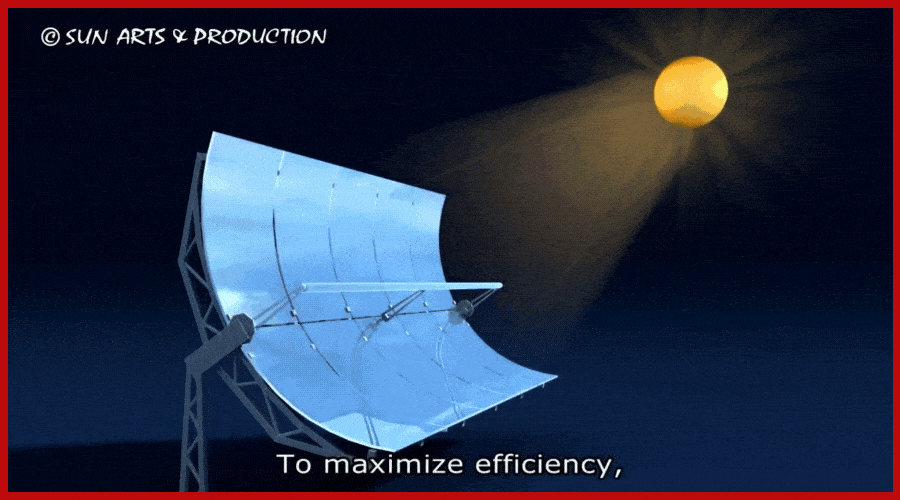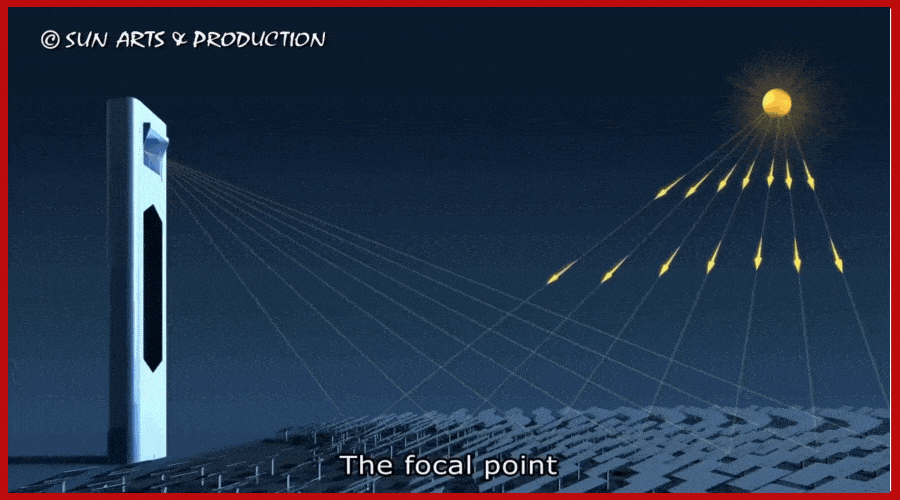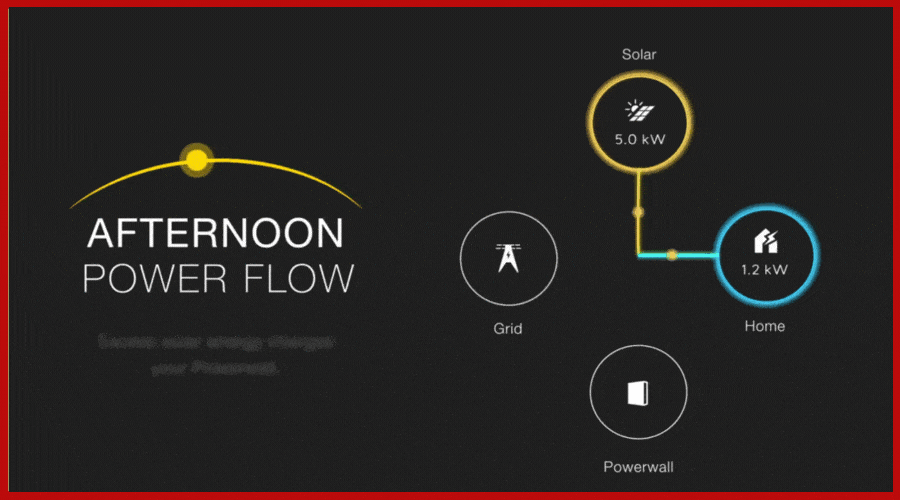

An Ancient Greek Weapon Could Become the Future of Solar Energy
source link: https://onezero.medium.com/an-ancient-greek-weapon-could-become-the-future-of-solar-energy-1ff08137c2b2
Go to the source link to view the article. You can view the picture content, updated content and better typesetting reading experience. If the link is broken, please click the button below to view the snapshot at that time.
An Ancient Greek Weapon Could Become the Future of Solar Energy
Converting death rays into electricity

Some 2,200 years ago, the Roman Empire decided to take over Sicily, an island located in modern-day Italy. It was a strategic move against the Carthaginians, whose influence spread over the Mediterranean basin.
The invasion was supposed to be a picnic for Rome’s well-trained soldiers. What they didn’t expect was that a clever older man named Archimedes was about to unleash hellfire on them.
Historians claim that Archimedes devised a technology capable of emitting heat rays that burned battleships from a distance. Supposedly, the Greek mathematician used curved, highly polished shields to turn the hot Mediterranean sun into a deadly weapon. That’s how the tiny city of Syracuse managed to fend off the great Roman army for an entire year.
While the accuracy of the story remains questionable, the technology involved turned out to be very real. Scientists call it Concentrated Solar Power (CSP), and modern powerplants use it to produce electricity at increasingly lower prices.
“[CSP] is a fairly new development,” said energy expert and author Craig Shields. “What it essentially means is focusing the sun’s rays on a certain point or a certain line and using that heat to turn a turbine to generate electricity,” he continued. “The fact that [this tech] is new means there’s so much potential for the costs to come down.”
Comparing the two variants of CSP
The first flavor of CSP dates back to 1866, and it’s as close as it gets to the legendary Greek weapon. The idea is to bend mirrors in a U shape — also called parabolic trough — to focus sunlight onto a central line. Across this line, you place a tube pumped with a liquid, often water or oil, to capture heat.

Once the liquid absorbs enough thermal energy, you can use it to generate steam, which generates electricity via a turbine. The first documented application of this tech appeared in 1912 in Egypt. It helped farmers pump water into the desert through steam-powered mechanisms — and since then, CSP has come a long way.
A 2020 project in Dubai produces enough electricity to power more than 1.2 million houses per year. The same project, called DEWA, is expected to increase its output fivefold by 2030. DEWA doesn’t only use U-shaped mirrors; it also relies on a variant of CSP tech known as Solar Power Towers. The first designs appeared in 1968 and showed great potential to outperform U-shaped mirrors.
As its name indicates, the second type of CSP operates through a tower and a field of straight mirrors. These mirrors track the sun via movable supports operated by computers. The reflected sunlight is concentrated on a limited area at the top of the tower, where a heat-capturing liquid awaits.

Because solar towers stack the energy of hundreds of mirrors on the same spot, they reach higher temperatures than parabolic troughs — 565°C compared to 400°C. But that’s not their only advantage.
CSP towers have an edge over U-shaped mirrors in three additional areas: flexibility, efficiency and cost.
- Flexibility: Solar Towers use molten salt as heat recipient and conductor. It’s more convenient than oil and water (used in solar troughs) because it has a wider operating range. In other words, you could make steam faster and in larger quantities.
- Greater efficiency: U-shaped mirrors conduct heat using multiple networks of pipes that are small in size. In contrast, Solar Towers use big single-pipe systems, resulting in less energy loss. Small volumes lose their heat faster than big ones.
- Reduced costs: CSP parabolic troughs use bent mirrors which are more expensive to produce than straight ones. Plus, CSP towers use fewer piping systems and require less maintenance.
That being said, the original CSP tech won’t go down without a fight. “A key advantage of parabolic troughs is that it is a very modular technology,” said Valerio Fernandez, an operations manager in a solar energy company. “Just by adding more loops in parallel, the capacity of the plant can be expanded.” Fernandez also explained that those U-shaped mirrors won the trust of investors over the last two decades, which makes new projects easier to sell.
Regardless of which type of CSP will end up dominating the market, the ongoing competition will improve both techs. Even better, troughs and towers won’t necessarily overshadow one another as they can be complementary. You can only put so many flat mirrors around a given tower, so why not fill the rest of the available space with U-shaped ones?
CSP tech may also leave behind the classic photovoltaic (PV) technology.
Where CSP beats PV solar panels
It boils down to two words: “stored heat.”
Unlike photovoltaic solar panels that convert sunshine into electricity right away, CSP produces heat first. Heat happens to be much easier and cheaper to store than electricity. To visualize the gap, picture a coffee thermos and a car battery. Both can store energy, but one is much more affordable and durable than the other.
You might say we got better at designing electric batteries (thank you, Tesla), and it’s true. But we’re still far from being able to store large amounts of electricity cost-effectively.
For instance, equipping the US electric grid with a nationwide network of lithium-ion batteries would cost $2.5 trillion. Even if you manage to build such a system, you’ll still need to replace them every two to three years, generating massive amounts of e-waste and recurring expenses.
In contrast, a storage tank used for molten salt can last 30 years — and you don’t have to replace it once it reaches its limit. All you need are a few months of maintenance, and you’ll be ready for another three decades.
PV solar panels aren’t entirely out of the storage game. The tech continues to shine thanks to crafty solutions like electric power walls (Thanks again, Tesla) and energy credits that financially reward individuals for producing more electricity than they consume.

But it keeps circling back to the issues of cost and scale. The aforementioned solutions are designed for individual consumption — and let’s face it: not everyone owns a (large) roof, let alone the means to turn it into a mini powerplant.
Thus, it makes sense to see governments show increasing interest in CSP.
Adoption is going up and prices down
CSP might be thousands of years old, but it only got attention during the last two decades. In particular, global CSP production grew 15 fold between 2009 and 2020, with Spain and the US as the leading countries.
In general, CSP projects are built in phases. The idea is to generate electricity as soon as possible and test the reliability of the tech.
For instance, the DEWA project in Dubai involved four phases; by the end, the facility attained a world-record price of $0.73 per kWh. That’s still twice the cost of electricity coming from coal-based plants, but experts are confident there’s lots of room for improvement. The U.S. Department of Energy Solar Energy Technologies Office (SETO) believes CSP electricity cost can be brought down to $0.5 per kWh by 2030, which is pretty close to PV prices.

CSP tech has to overcome technical, financial, and environmental obstacles for that to happen.
- The technical challenges involve efficiency and energy transportation. In an ideal scenario, we’d be able to power cloudy cities using powerplants installed in deserts.
- The financial challenges involve a chicken-and-egg problem. Investors won’t bet on a tech that’s not popular yet. The tech won’t be popular without new investments.
- The environmental challenges come from the use of large amounts of water and harmful materials like thermal oils and molten salts, which may pose spill risks.
Luckily, the first two obstacles depend mostly on incentives, which can be created by regulations and subsidies. As for the last, we can use ocean water and high safety standards to preserve our planet.
A sun-powered future
Every hour, the sun showers our planet with enough energy to power all of our electric grids for an entire month. Which raises the question: What the heck are we waiting for to go all-in with solar?
Up until now, we didn’t have compelling incentives. Fossils worked just fine, and we kept pollution as a problem for future generations.
But we can’t do that anymore.
As a result, sustainable energy is getting cheaper and more efficient, and solar seems to be our best bet. The next logical step would be to engage in mega-projects that turn poor abandoned deserts into energy paradises. This sounds like a far-fetched idea until you learn about the Desertec Industrial Initiative.
In 2003, The European Union considered developing a $774 billion network of CSP power plants in the Sahara region. The idea was to build a carbon-free network linking Europe, the Middle East, and North Africa. But there was a catch: the deal wasn’t fair.
“Many Africans are skeptical about Desertec,” said Daniel Ayuk Mbi Egbe from the African Network for Solar Energy. “Europeans make promises, but at the end of the day, they bring their engineers, they bring their equipment, and they go. It’s a new form of resource exploitation, just like in the past.”
Perhaps we can do better going forward. Instead of merely using African deserts as giant batteries, we can build fruitful ecosystems where the local economies thrive. With enough energy, everything is possible: green factories, desalination plants, data centers, eco-farms, you name it.
Not only would it be a great way to pay back the continent that kept being robbed of its resources over the centuries. But we’d also boost the global economy like never before.
CSP would then reenter history books, but it won’t be a destructive weapon this time. It would be humanity’s pathway to a better future. Archimedes himself would be astounded.
Want to unlock unlimited articles on Medium? Click here to subscribe for $5 per month. Your membership directly supports your favorite writers.
Recommend
About Joyk
Aggregate valuable and interesting links.
Joyk means Joy of geeK